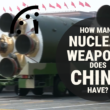Baldev Raj and P.R. Vasudeva Rao have argued that reprocessing and fast breeder reactors are necessary for the long-term sustainability of nuclear power. Indeed, fast breeder reactors' potential to produce more fuel than they consume has held an attraction since the advent of nuclear power, especially to those who envision a time when uranium will no longer be available cheaply. Unfortunately, several decades of experience have shown that plutonium recycling systems are much more costly and much less reliable than water-cooled reactors. If establishing sustainable nuclear power means successfully managing important issues such as nuclear safety and proliferation resistance, while also achieving economic competitiveness, minimizing production of radioactive waste, and using natural resources wisely, breeder reactors and plutonium recycling still have far to go before they can meaningfully contribute.
Raj and Rao wrote in Round One that for countries such as India and China, with limited uranium resources, "large-scale expansion of nuclear energy is not sustainable without reprocessing and recycling." But a country’s own limited uranium resources do not necessarily constrain its nuclear power development. In fact, the global distribution of uranium resources can generally be characterized this way: Countries with more nuclear energy have less uranium, and countries with more uranium have less nuclear energy. Trade in uranium naturally constitutes a global market.
In Round Two, Raj and Rao went on to write that "discussions about long-term, sustainable sources of energy cannot be based solely on today’s economics. Uranium prices will go up when supplies begin to run out." But past predictions that uranium prices would steadily rise have been proven wrong. Even when demand has increased, uranium prices have remained relatively low. This is unsurprising in a way—prices for most minerals have decreased in constant dollars over the past century even as extraction has increased. For uranium, increased exploration and advances in technology have caused known resources to increase faster than uranium has been depleted. Known uranium resources are a dynamic economic concept, and global resources will surely prove to be greater in the long run than the amount currently reported in the Red Book.
Raj and Rao also argue for plutonium recycling on the grounds that it produces lower volumes of nuclear waste than the once-through cycle produces. But plutonium reprocessing and recycling still produce high-level waste, long-lived intermediate waste, and low-level waste. All of these waste streams must eventually be buried, so reprocessing does not eliminate the need for repositories. Moreover, a geological repository's capacity is determined by the waste's decay heat, not the physical volume of waste. Thus, at the geological repository for high-level waste that China envisions establishing in Gansu Province, capacity would merely double if all transuranic elements were separated from nuclear waste—the same increase that could be achieved by waiting 100 years before burying the waste. China, therefore, instead of building an expensive reprocessing plant, could opt for relatively low-cost dry cask storage. In the end, the capacity of geological repositories is increased to only a tiny extent by reprocessing plutonium and recycling it once via mixed-oxide fuel.
Regarding the proliferation risks that breeders and reprocessing might introduce, Raj and Rao have written that "resistance to proliferation can easily be built into the design of the fuel cycle" and that pyroprocessing "provides inherent proliferation resistance." It is true that pyroprocessing does not produce pure plutonium, as traditional PUREX reprocessing does. But the end product of pyroprocessing is much less radioactive than is spent fuel itself. It would be a relatively straightforward process to separate plutonium after pyroprocessing is complete—easier than to separate plutonium directly from spent fuel. Raj and Rao also portray plutonium recycling—as opposed to separation—as a "nonproliferation measure." But plutonium recycling and breeders require that plutonium be separated in the first place, allowing it to be put to military uses. Indeed, India's 1974 "peaceful" nuclear explosion used plutonium purportedly separated for use in the country's breeder program. And even if governments have no desire to proliferate, separated plutonium is much more vulnerable to theft or misuse than is spent fuel.
Finally, Raj and Rao contend that "the current generation bears a responsibility toward future generations not to deplete the world's uranium resources." But if the current generation is unable to guarantee the safe and secure operation of nuclear power plants today, what's the point of maximizing uranium resources for future generations? In particular, what's the point of doing so through breeder reactors and plutonium reprocessing—problematic technologies that introduce additional security risks?
Topics: Nuclear Energy, Nuclear Weapons
Share: [addthis tool="addthis_inline_share_toolbox"]














